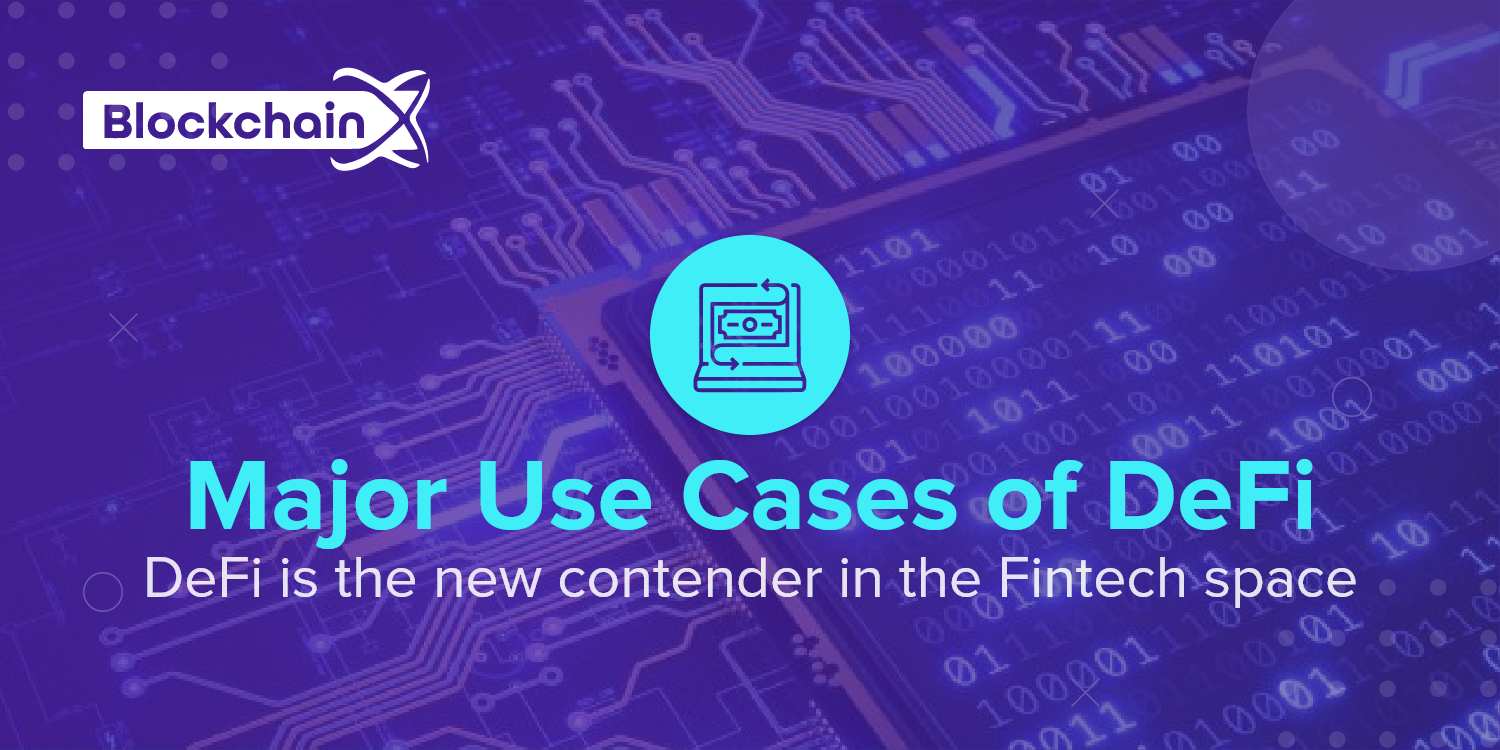DeFi is the new contender in the fintech space and is gaining a tremendous amount of traction. The term DeFi means Decentralized Finance and is grabbing a lot of attention from several entrepreneurs. The reason is that the idea revolves around sectors such as banking, financial services, and insurance and brings a lot of benefits to the table. DeFi looks to revolutionize the way we look at finance by decentralizing financial functions, primarily lending and borrowing, and making it universally accessible. This involves eliminating the intermediaries such as banks and financial institutions and leveraging the automation to perform direct financial transactions among the participants. At first glance, you will find that it seems similar to existing financial solutions that work on blockchain technology. If so, why are more and more players basing their projects on it? Why are big names in the game like Binance and Coinbase creating a space for DeFi on their platforms and promoting it to the users? Is it just the same product in new packaging, or is there something revolutionary about the idea? Let’s dig a little deeper and find out.
What is Decentralized Finance (DeFi)?
DeFi stands for "Decentralized Finance." It is an ecosystem for financial functions built to define investing, borrowing, lending, trading, and other financial services based on a decentralized infrastructure. If you would like to learn about the basics of DeFi, we recommend reading our article on “What is DeFi?” on our blog.
Develop your DeFi financial services and products using open-source software on decentralized networks to build and maintain transparency and trust within the framework.
The system has generated significant results, yielding comprehensive revenue ever since has hit the market. The combined value in DeFi contracts has increased dramatically from US$ 2.1 million in September 2017 to US$6.9 billion in August 2020. It has further risen by US$2.9 billion since August 2020.
What Problems Does Decentralized Finance Solve?
The major benefit of decentralizing financial services is that it enables universal access to everyone around the world. . Even today, large populations in third-world countries lack access to traditional financial services.
1. Inequality in Finance.
As we spoke about earlier, one of the major problems in the financial sector today is inequality in receiving financial services. For some of us, living in developed or developing countries, availing of loans might not be as difficult as it was a decade ago. However, there are populations in countries around the world that have access to smartphones and the internet but not to financial services like loans or bank accounts. DeFi tries to solve this problem by building a systematic ecosystem on decentralized networks where users can avail themselves of various financial services through just a smartphone and internet connection.
2. Financial Censorship.
Censorship of financial assets is something that most of us would have some experience with. In centralized financial systems, the users have no ownership of their assets. Financial institutions and Governments have the power to restrict user's access to their own money. They often put restrictions on the amount of money one can withdraw at a particular time and the number of times in a day they can do it. Banks even change service charges from customers for withdrawing money from their accounts.
There is a system at play here, and one where the big players sitting in the rolling chairs of central authorities control what happens to a customer’s assets. Governments, banks, and intermediaries can freeze any company or individual’s assets at their sole discretion.
However, the financial services in a DeFi system are not under the control of any central authority or institution. Hence, no one can deny you access to your assets.
What Are The Use Cases For DeFi?
Such innovative approaches to finance give Decentralized Finance the potential to revolutionize the global financial system. Let's understand some of the use cases for DeFi:
1. Payments
Decentralized Finance implements blockchain-based protocols through its applications. With this, users can make instant payments from their wallets which are often cheaper than other systems. These applications also provide exclusive discounts to users, persuading them to continually use the platform.
2. Borrowing and Lending
There are a lot of Red Tape laws and restrictions for borrowing and lending functions. . However, Decentralized Finance provides users universal access to these DeFi Lending and Borrowing Platforms, often only asking for collateral in cryptocurrency.
It includes:
i. Quick transaction settlements
ii. Allows for backing up of digital assets with real-life assets.
iii. Does not require credit checks and offers access to all users.
iv. Keeps the options open for borrowers and lenders because they can choose from a wide number of users to transact with, democratizing the process.
3. Stablecoins
As the name suggests, stablecoins are cryptocurrencies that are pegged to fiat currencies such as the US Dollar. These coins are used to create stability. These assets dodge the typical price swings with cryptocurrencies and are suitable to use as mediums of exchange and to store value. Stablecoins are a sustainable solution as compared to traditional cryptocurrencies, which are not functional units of an account owing to their volatility.
4. Tokenization
Tokenization connects cryptocurrency tokens with real-world assets. Simply put, tokenization creates asset-backed tokens to elevate its liquidity in the market. This process can accelerate the place of assets with low liquidity such as jewelry, real estate, and art, in the market. It also allows us to divide these assets into portions where investors can buy parts of the asset, instead of the whole thing. What this does is that it allows low-income earners to invest in products or services that previously were out of reach because of the high prices.
5. Decentralized Exchanges (DEXes)
Decentralized Exchanges or DEXes are platforms where users can make peer-to-peer transactions in an automated manner. This way, users don’t have to depend on third-party exchanges. Moreover, newer, inexperienced users can trade coins without any complicated processes.
6. Issuance Platforms
These platforms automate the process of tokenization and provide users with easy-to-use tools to create digital tokens and tokenize their assets. The issuance platform provides users with the technical and legal infrastructure and takes a lot of the complexity out of the process. Individuals and companies can seamlessly raise funds through the tokenization process, using simple and easy-to-use user-interfaces. This also eliminates the need to rely on intermediaries such as banks, credit unions, lawyers, etc.
7. Open Marketplaces
The open marketplaces eliminate the need for central authorities for transactions. By eliminating market dominance by central authorities, Decentralized Finance opens the doors for a user-centric market where free trade is encouraged. Users can now trade non-fungible tokens such as trading cards, collectibles, game items, etc. through blockchain-based smart contracts.
8. Prediction Markets
Prediction markets are essentially betting arenas where users bet on the future outcomes of game nights, elections, weather, natural disasters, commodity prices, and other significant events. Decentralized Finance democratizes prediction markers by providing universal participation. This means that users can take part in betting events without the approval of any centralized authority. A user can place bets on an event of their choice from any part of the world.
9. Decentralized Autonomous Organizations (DAOs)
Decentralized Autonomous Organizations are decentralized bodies that use blockchain frameworks and smart contracts for automated decision making. They solve problems like corruption by maintaining the highest level of transparency where all the criteria and bylaws for decision-making are coded into smart contracts. This makes the entire process seamless, needing little to no human input.
The Bottom Line
Decentralized Finance is creating a secure and transparent financial ecosystem that provides universal participation.
By harnessing the power of blockchain technology and true decentralization, DeFi systems have proven to be the most influential disruptors of the global financial markets.
DeFi also acts as the foundation for many more projects to come in a truly decentralized market that can act as a democratized platform for populations around the world, especially in third-world countries.

